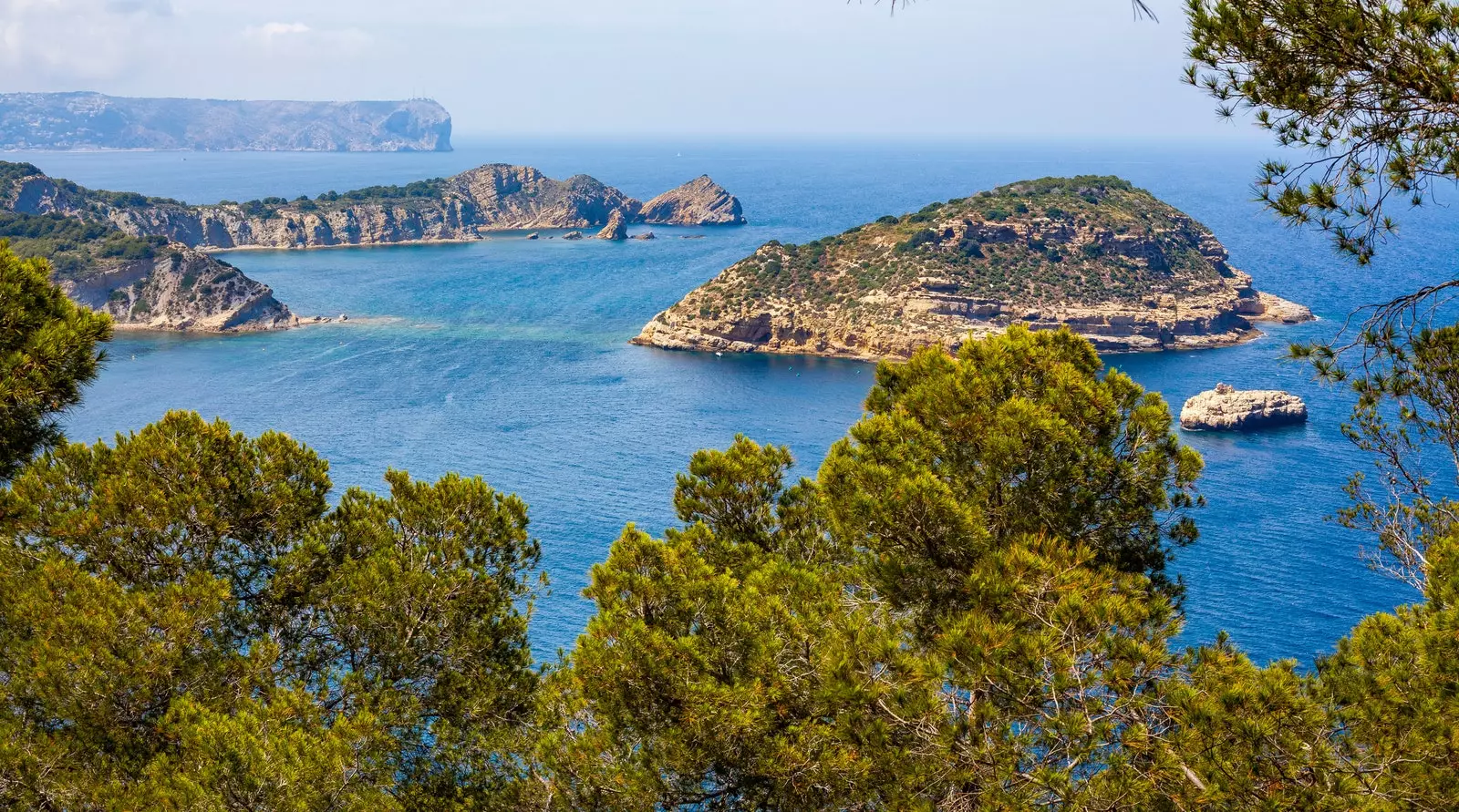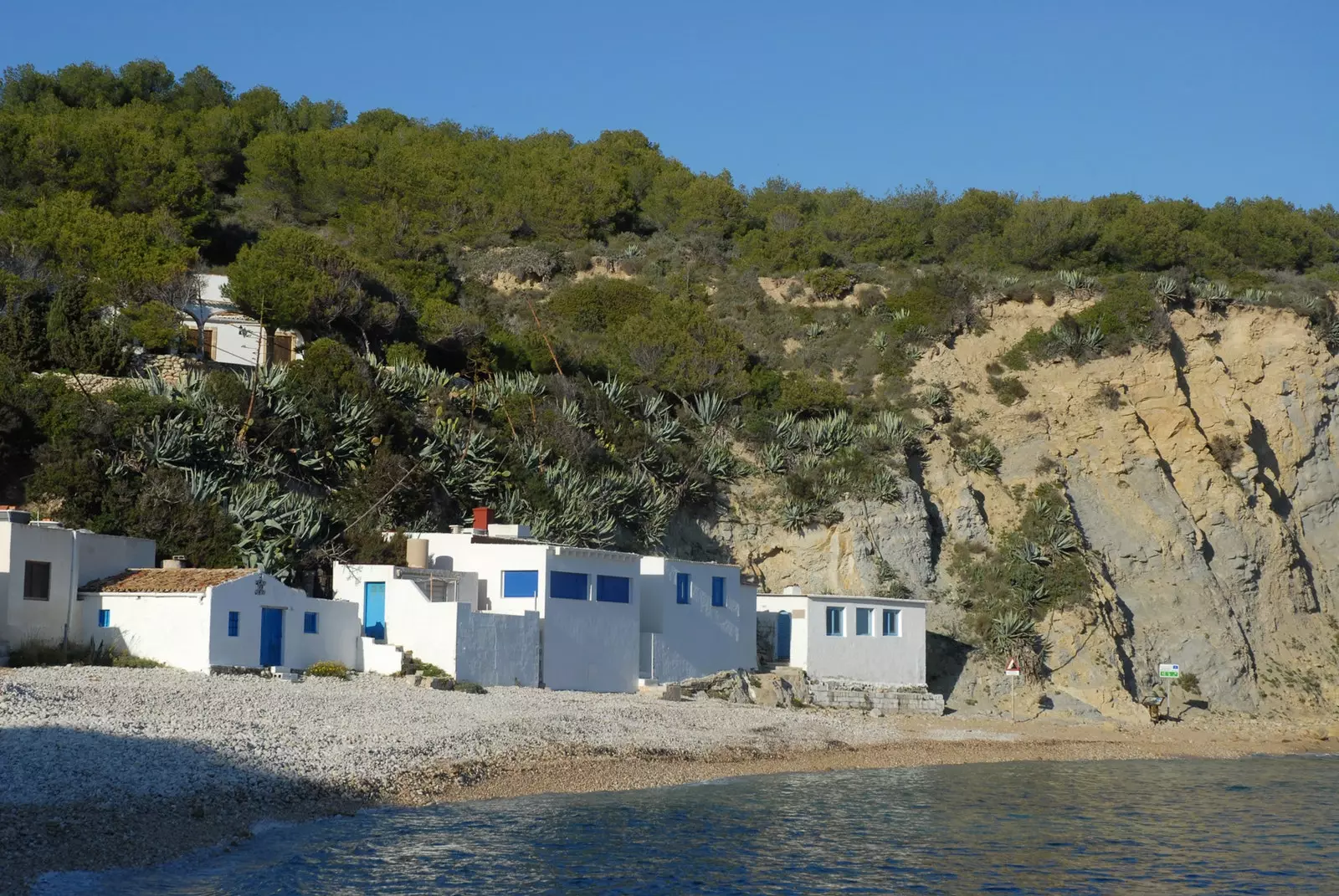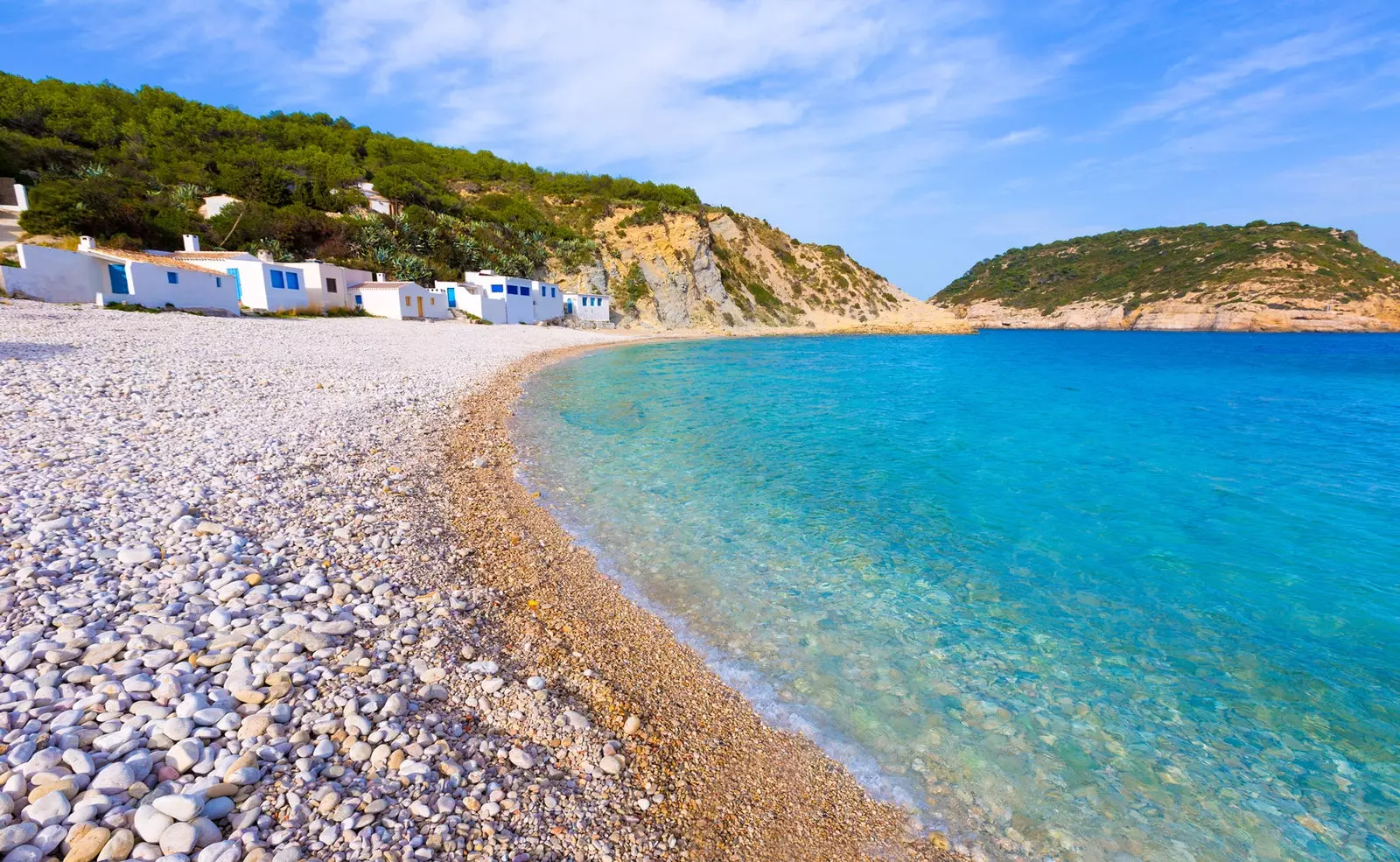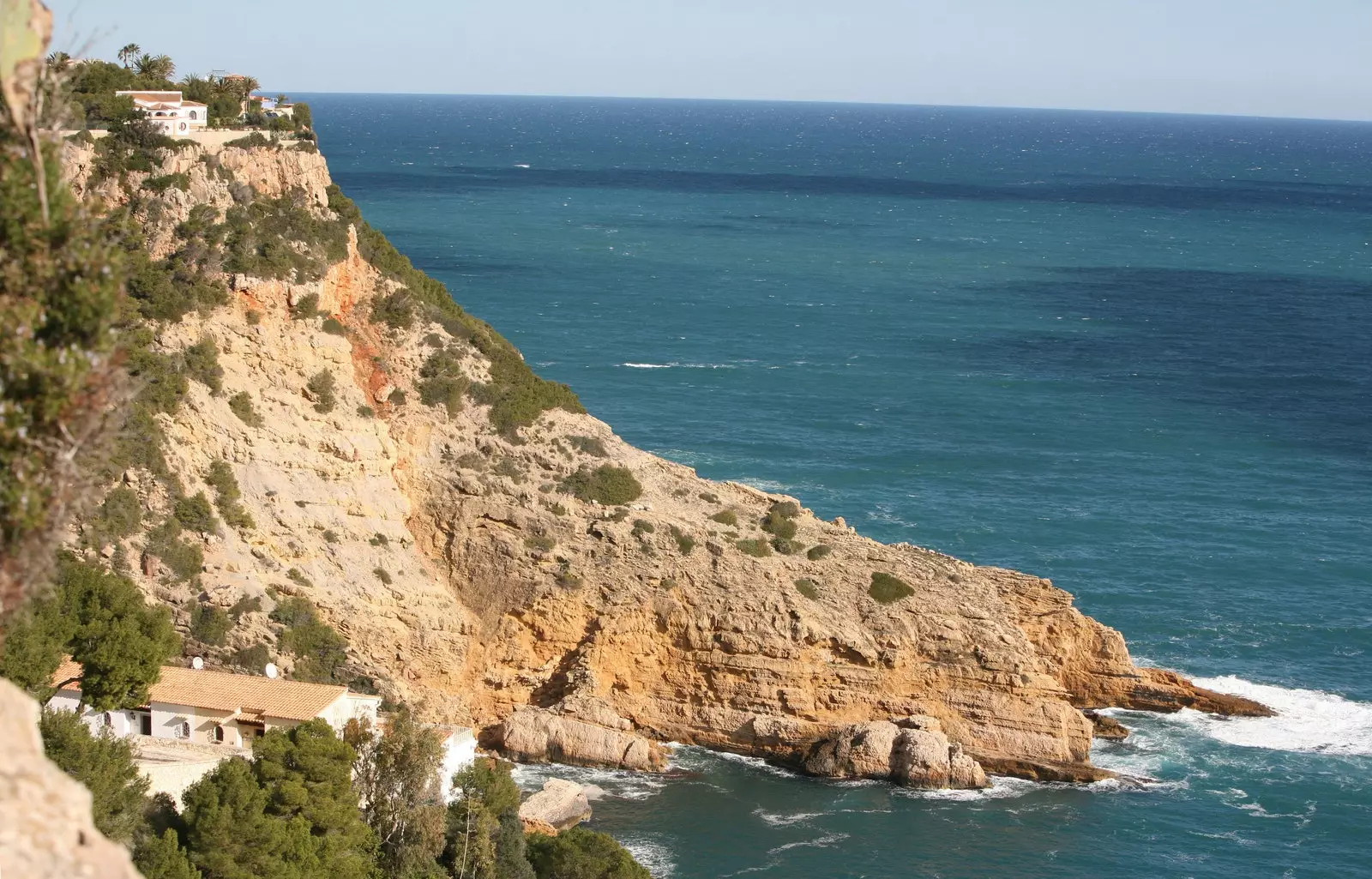
Adventure to the island of Portitxol
The Portitxol cove has positioned itself among the most coveted places by influencers in search of the perfect photo . The attractive white houses with blue doors and windows accompanied by unnecessary comparisons with Greek islands, they are the perfect setting for capturing likes.
But, in addition to Portitxol no comparison needed Few know that one day this little beach It was an important Roman enclave . Few look beyond those old fishermen houses to realize that, among the waters of pure and crystalline blues the greatest treasure of the place is found , a island about 300 meters in diameter that has a past full of history ready to leave us stunned and a wonderful surprise inside that we deserve to discover. We are facing one of the best kept secrets of the Marina Alta, between Cap Prim and Cap Negre, seven kilometers from Jávea and sheltered by the Montgó Natural Park.

The cove takes its name from the white fishermen's houses, called barracas
The image that will most seduce us of the stony Barraca cove , as it is also known, will be the one we get when we enter its waters. White houses with blue windows crowd the shore of the beach toasted with its Mediterranean touch. But if this cove is wonderful for its irrefutable beauty, so is for its history and for its marine wealth , which makes it an ideal place to practice scuba diving or snorkeling.
With that calm sea that gives us back childhood games between soft waves, and still incredulous by power enjoy those turquoise that turn dark as we go, we are about to conquer an island, but before we go on a treasure hunt, let's stop at the rugged coastline.
PADDLING IN SEARCH OF TREASURE
To get to the island of Portitxol you will have to swim (not recommended due to possible currents), by boat, jet ski or kayak . We are left with this last option because it is the one that most respects nature and the most accessible to penetrate its charms. To do this, we contacted Xàbia Activa, a company that carries sustainability as its flag in all its activities. its owner, Raul Ibanez , knows better than anyone the history and evolution of the island, since he worked for a few months at the Soler Blasco Archaeological and Ethnographic Museum located in Jávea and played there as a child. What better guide than him to glimpse the historical traces of Portitxol?

Barraca cove
Raúl warns us that there are days when it is not feasible to arrive due to changes in wind . The currents are deceptive, something that we perceive as soon as we get into the kayak and start paddling, another compelling reason to opt for this method.
Advancing avoiding the slight waves of privileged waters fed by posidonia is a complete satisfaction. In these depths guarded by rocks and posidonia , remains of amphorae, anchors (iron, lead and stone) and other pieces , mainly from the Roman age , which demonstrate the commercial importance of the area. "In the Punta del Arenal, in Javea , there was a Roman fish factory” Raúl tells us. "Along with wine and handicrafts, they were a source of commerce."
Before heading to the island, we sail between the steep cliffs of Cap Negre that give shelter to the cove. At its feet, small caves open up that can be accessed by swimming rocked by the waves. A few seconds inside are enough to feel the icy fresh water that flows between the walls.
At this point the sea is calm, allowing you to enjoy minutes of snorkeling with colorful fish that flap near the rocks. There are also caves that are difficult to access that contain stories of traffickers and treasures. The Tobacco Cave , in which, in addition to tobacco, other contraband products such as soap and oil were hidden in the 19th and 20th centuries, explains Ximo Bolufer, director of the Soler Blasco museum.

Rugged cliffs of Cap Negre
The supposed treasures are hidden among the darkest cavities of the Gold Cave . There are many who have ventured to search for them without success, or who knows? They have lived for years under a mattress. What they have found is Neolithic relics, perhaps the best treasure.
The end of the cape marks it an islet 40 meters deep which stands as one of the best diving spots in Jávea. Continuing towards the island of Portitxol we come across the Mona Island , a rock bird habitat used as an important fishing point.
Once we reach the desired destination of this adventure, we access the opposite side of the cove. Between the walls, innumerable fossils mark the island's past. Cataloged in 2018 as a Site of Cultural Interest (BIC) , traces of ancient Roman and even Phoenician settlements . In fact, it was occupied intermittently from prehistory to the beginning of the 19th century.
We look for its signs among the strata of its walls: scallops denoting that the Mediterranean once had cold waters, land urchins … On one of the sides, a natural window opens onto the small bay giving us one of its most beautiful images.
We return to the outside in search of the great wonder of the place: a natural pool embedded in a corner of the island which was probably used by the Romans in times of sea storms. And there, where history, nature and calm converge, We jump into the water to surrender to absolute relaxation in one of the most magical dips in the Mediterranean.
